

Max Davies
2026 Ram 1500 Rebel review
5 Days Ago
The Kia Cerato’s rise up the sales charts is mostly well-deserved, though it’s let down by an uninspiring powertrain.
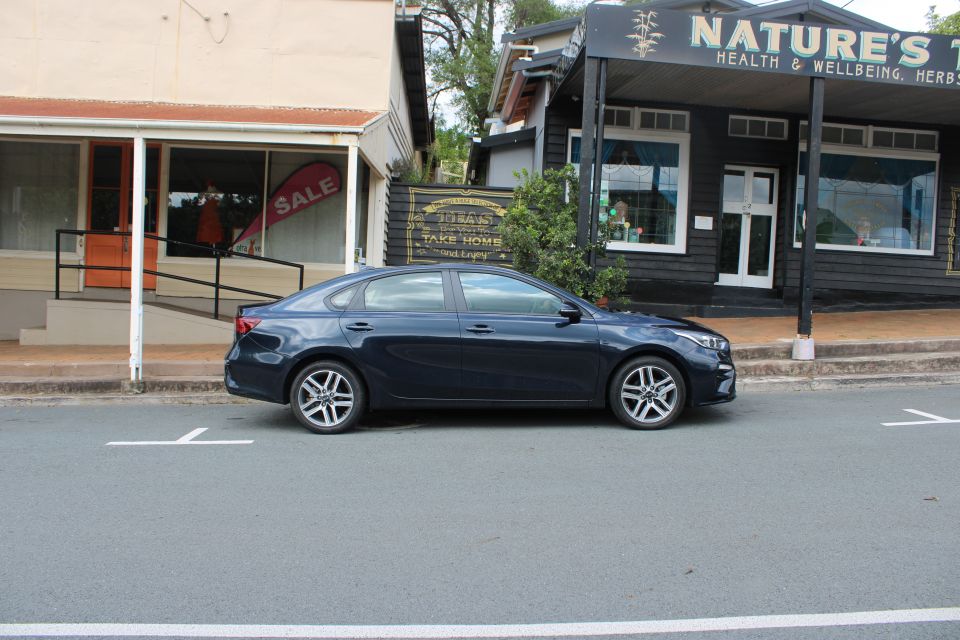
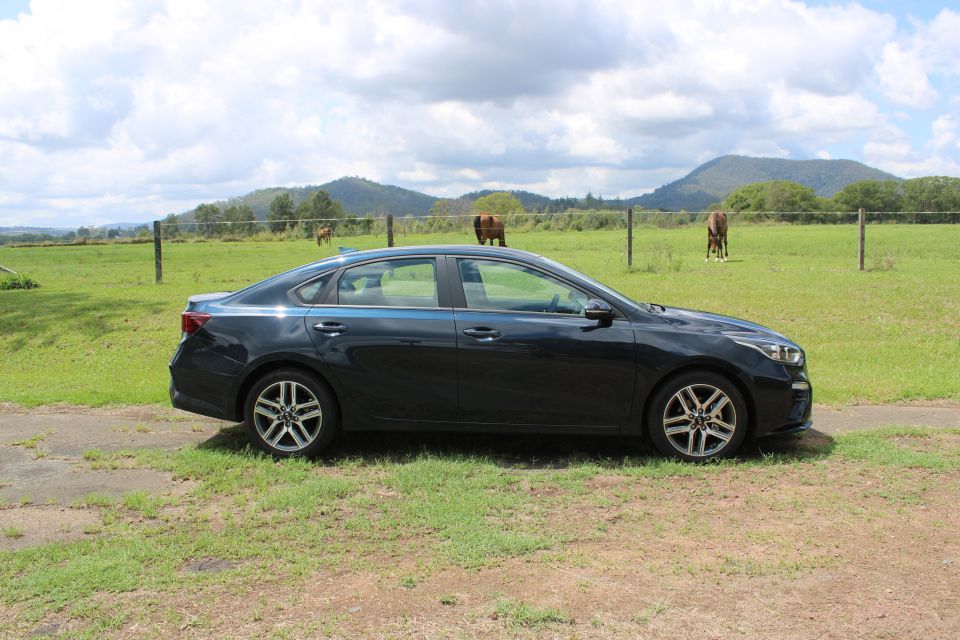

News Editor
New from
$20,990
excl. on-roads

News Editor
New from
$20,990
excl. on-roads


News Editor
New from
$20,990
excl. on-roads

News Editor
New from
$20,990
excl. on-roads
Quickly see how this car stacks up against its competition. Select any benchmark to see more details.
Where expert car reviews meet expert car buying – CarExpert gives you trusted advice, personalised service and real savings on your next new car.
It seems like the Kia Cerato is everywhere nowadays.
Over the past five years, sales have more than tripled and show no signs of slowing.
Part of that growth is due to Kia’s gold standard seven-year, unlimited-kilometre warranty. But it’s also because the Cerato is a solid option in the small car segment.
Slotting under the range-topping GT, the Kia Cerato Sport+ is priced at $28,840 before on-road costs. There are regular drive-away deals, however.
Unlike the lower S and Sport grades, it’s available solely with a six-speed automatic transmission.

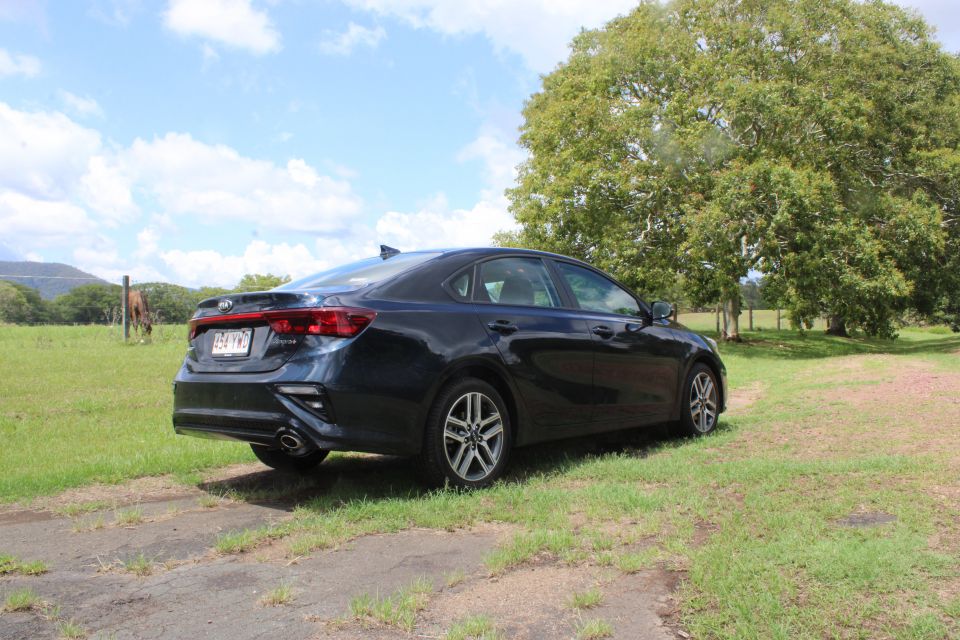
Like all Kia Cerato trim levels, the Sport+ is available as either a four-door sedan or five-door hatchback with no price difference between the two body styles.
Buy your new car without the stress. It's fast, simple and completely free.

Great service from Travis and team, second time I have used this business would not hesitate to recommend them to anyone
Craig C.
Purchased a Ford Ranger in Sunshine Coast, QLD
CarExpert helped Craig save $7,224 on his Ford Ranger, now let us save you on your next new car.
Get your BEST priceStandard equipment on the Sport+ includes adaptive cruise control, proximity entry with push-button start, leather seats (heated up front), dual-zone climate control, 17-inch alloy wheels, and an 8.0-inch touchscreen infotainment system with satellite navigation.
Though the Sport+ comes well-equipped, there are even more luxuries to be had in the GT like wireless phone charging and ventilated front seats.
The GT also swaps out the standard torsion beam rear suspension for a multi-link setup, and the standard powertrain for a turbocharged 1.6-litre four-cylinder and a seven-speed dual-clutch automatic.
One other addition in the GT is an eight-speaker JBL premium sound system, which addresses one issue with the Sport+: its average sound system.
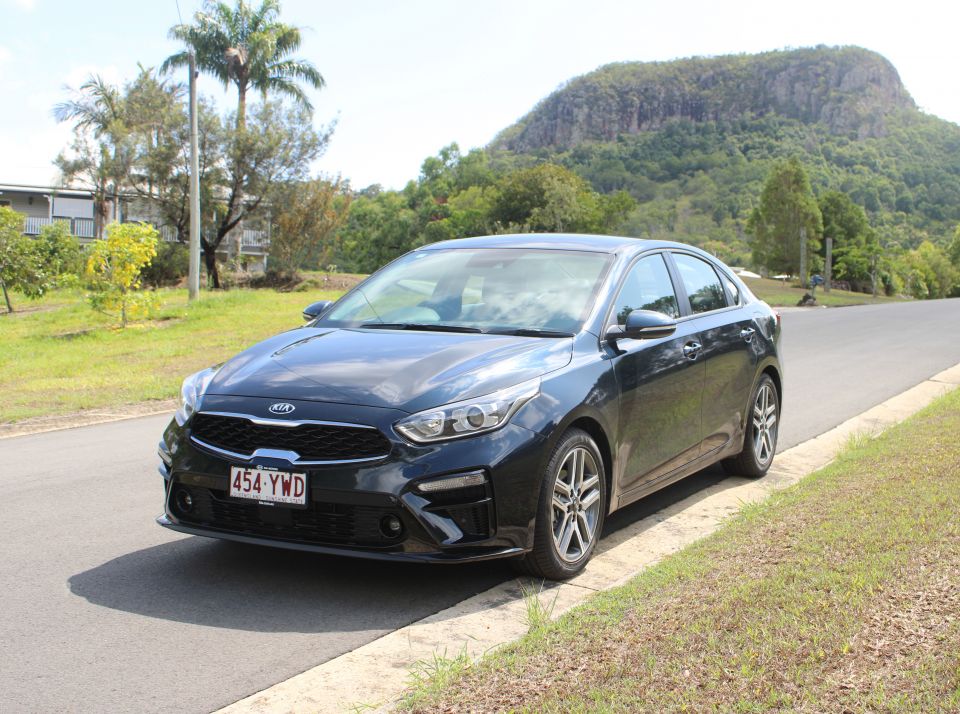
It’s especially apparent on the highway, where you have to crank the volume into the upper reaches.
That’s not to say the Cerato is especially noisy while cruising along the highway, though there’s some tyre roar.
Standard safety kit on the Sport+ includes front and rear parking sensors, a reversing camera, autonomous emergency braking, forward-collision alert, blind spot monitoring, rear-cross traffic alert, lane-keep assist and lane departure warning.
The lane departure warning uses a vibration instead of an audible chime, which is a much more logical and less stressful way to warn the driver. It’s like driving over a rumble strip.
All Cerato models, excluding the S and Sport without the optional Safety Pack, received a five-star ANCAP rating in 2019. The regular S and Sport received only a four-star rating.
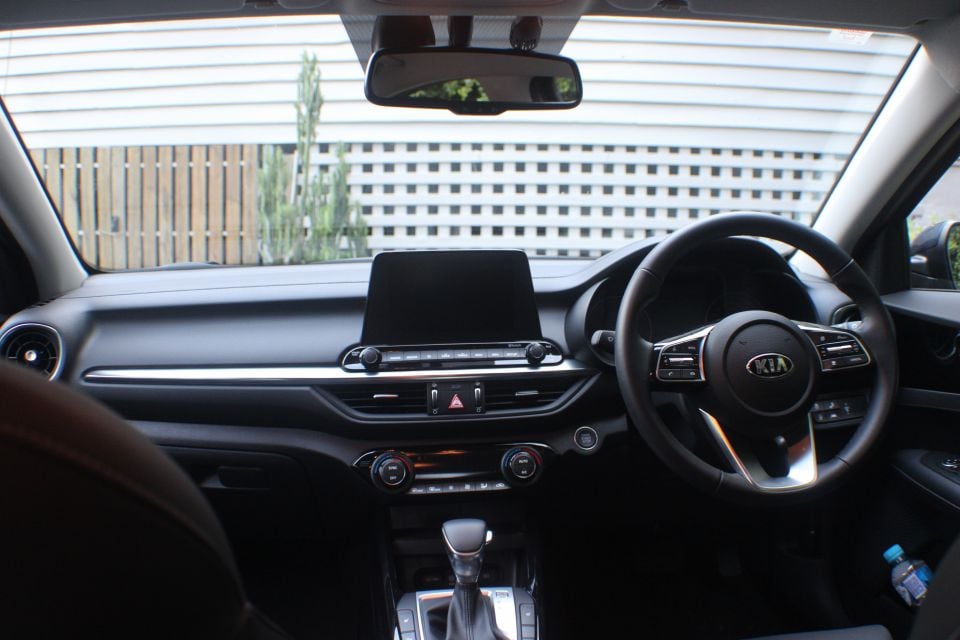
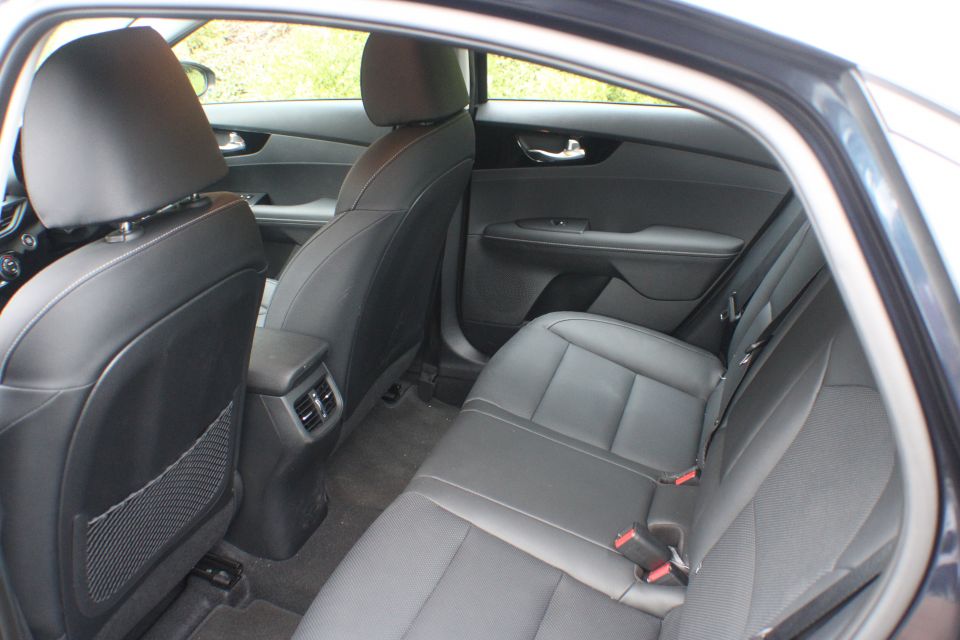
The Cerato has a typical Kia interior with a clean design and good materials for the class.
It’s a relatively conservative design overall but the round, Stinger-inspired air vents add a touch of flair.
Rubberised plastic is used on the top of the dash and the top of the front door trims with hard plastic used everywhere else, including the entirety of the rear door trims.
It’s all screwed together well but it’s not perfect.
The monochromatic red display for the climate control, for example, looks rather 2000s. Many other Kia products simply display this information on the touchscreen.
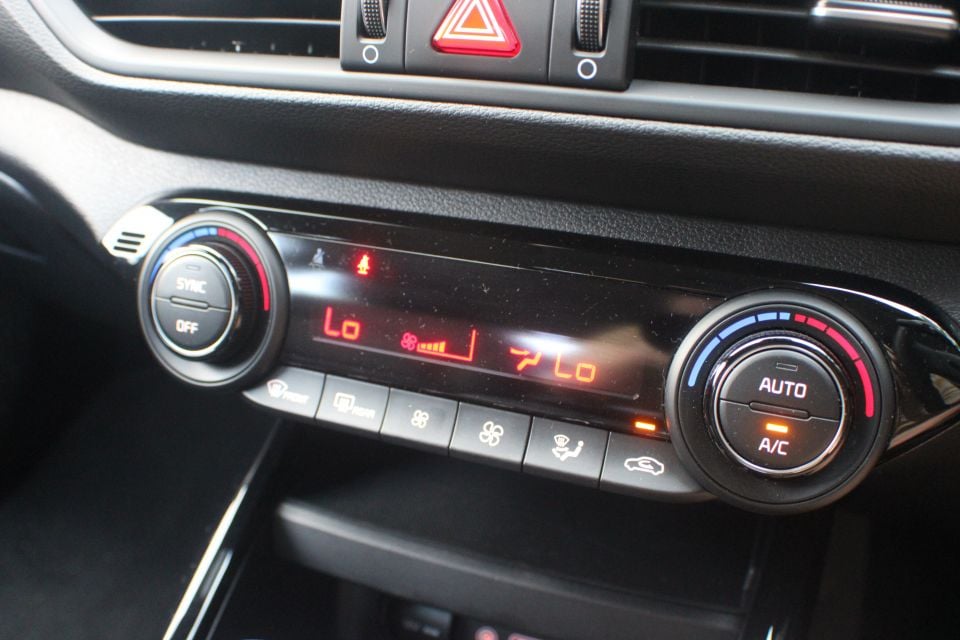
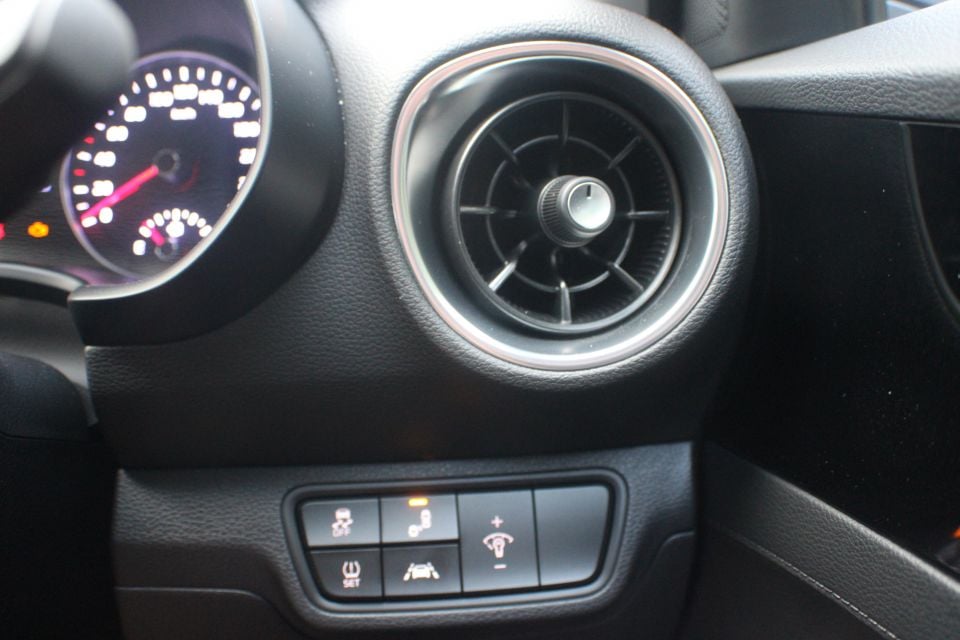
More aggravating is the sunglass holder near the rear-view mirror. It lacks any kind of felt or mouse-fur lining so your sunglasses noisily rattle around in there.
Other gripes include orange lights next to the gearshift that get washed out in sunlight and only the driver’s window having auto up/down functionality
The attractive, leather-appointed front seats are firm yet supportive, even after several hours of driving, though one passenger found them lacking somewhat in lumbar support.
They are slightly narrow so someone with a larger frame mightn’t find them quite so comfortable.
Kia’s infotainment systems are hard to fault, consistently featuring a modern, legible interface and excellent useability.
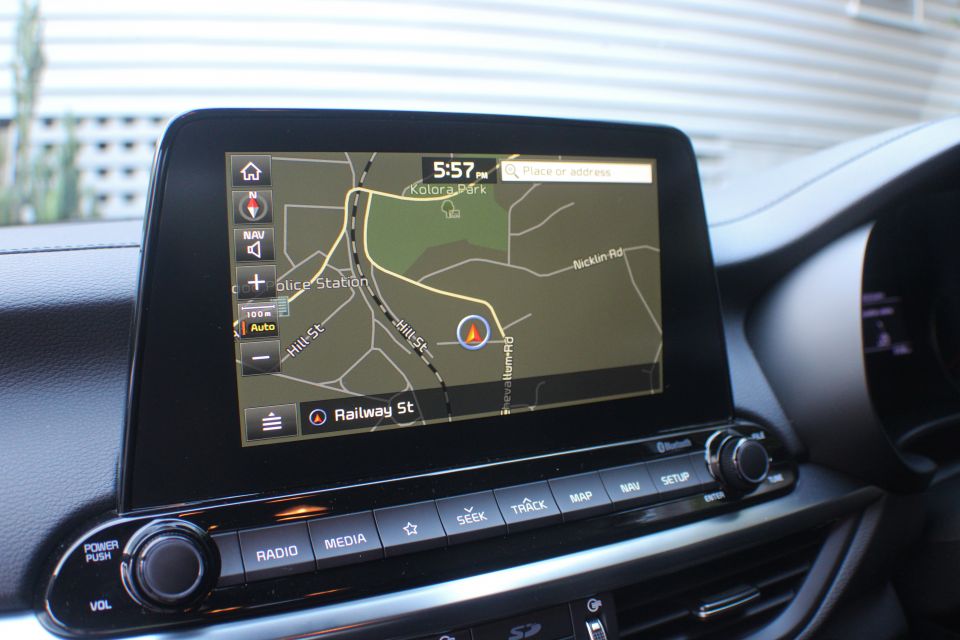
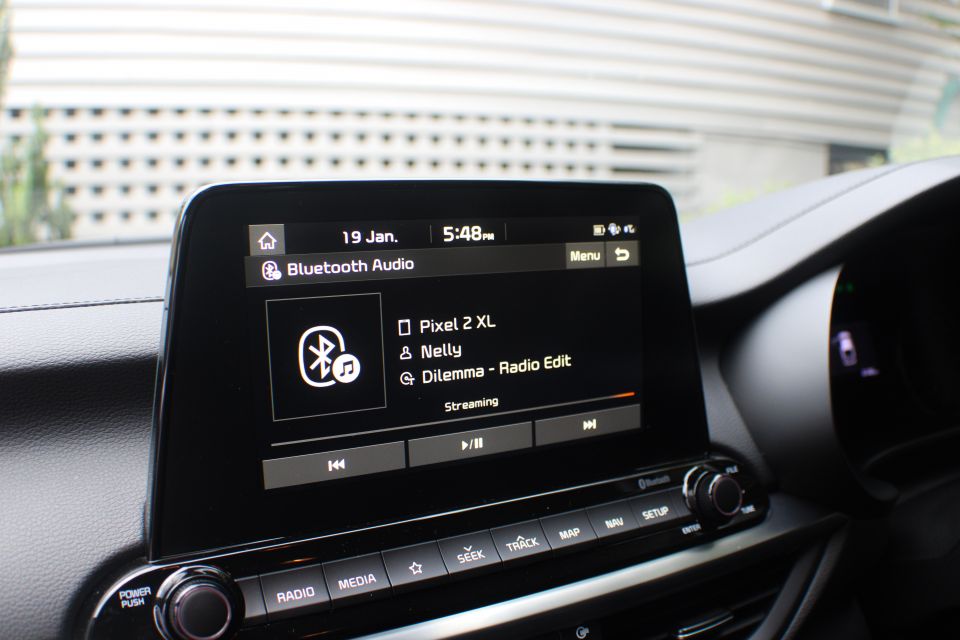
The Kia Cerato’s 8.0-inch unit features satellite navigation and Apple CarPlay and Android Auto connectivity.
The only thing to fault about the Kia’s screen is the picture quality for the reversing camera. At night time, in particular, it’s grainy.
There’s a 3.5-inch monochromatic display in the instrument cluster that includes a digital speedometer. Conveniently, it also displays what speed your wipers are on as you move the stalk.
Stepping into the back seat, it’s easy to see why mid-sized sedans have been struggling for so long in Australia.
Why bother spending the extra money for an Optima when the Cerato has such ample legroom and headroom?
Additionally, there are rear air-conditioning vents and map pockets in the rear seatbacks, albeit no power or USB outlets.
As expected in this class, the rear seats split and fold 60:40. There are also three top-tether anchor points and two ISOFIX points for child seats.
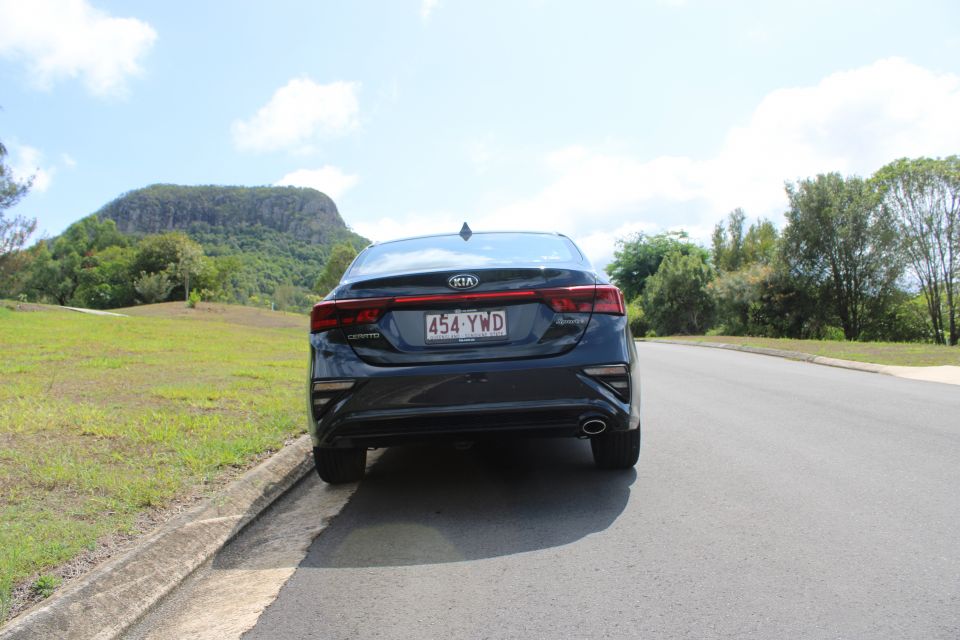
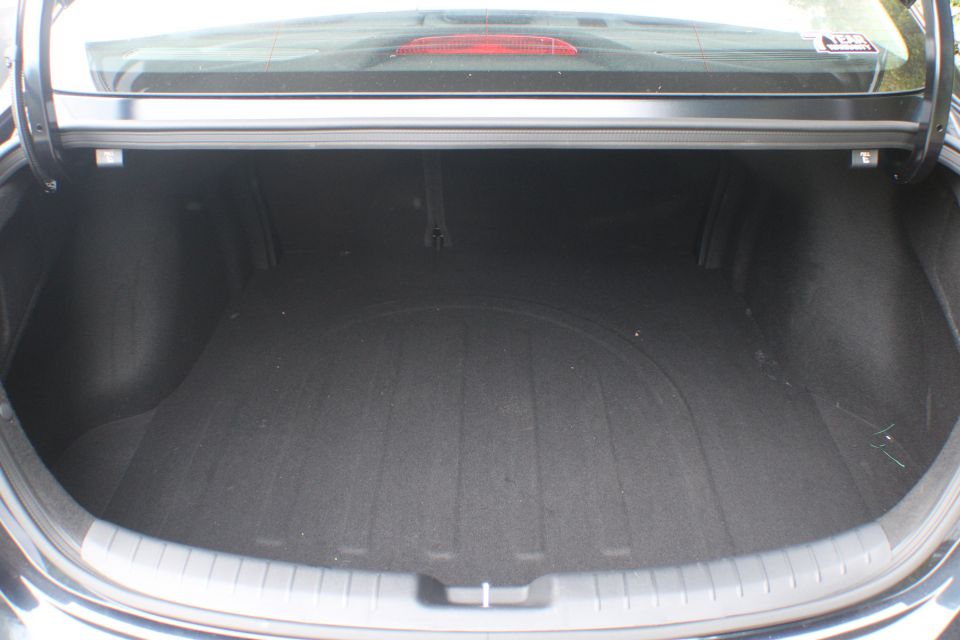
The boot has a volume of 502L, more capacious than that of a booted Mazda3 or Corolla, but the smallish opening hinders practicality.
If you want maximum load-carrying ability, you’d best opt for the identically-priced hatchback. Capacity is less at 428L but, naturally, there’s a larger opening.
Regardless of body style, however, the Cerato has only a space-saver spare under its boot floor.
Motivation is provided by a 2.0-litre naturally-aspirated four-cylinder engine that produces 112kW and 192Nm.
That’s more powerful than the base engine in rivals like the Honda Civic.
It’s the same engine used in the Cerato’s corporate cousins and direct rivals, the Hyundai i30 and Elantra, though the i30 has an extra 8kW and 11Nm.
Rivals like the Volkswagen Golf, Toyota Corolla and Mazda3 also have more torque and superior fuel economy.
Pushing the start button and heading out on the road, one of the first things you’ll notice is the surprisingly heavy steering.
Unlike many other electrically-assisted set-ups, it’s got some heft to it and a decent amount of road feel. Even outside of Sport mode, it feels heavier than that in a Stinger.
The ride, too, is unexpectedly firm for a car in this segment. It’s hardly objectionable, as Kia’s traditionally impressive local suspension tuning means it still dispenses with bumps in a sophisticated manner.

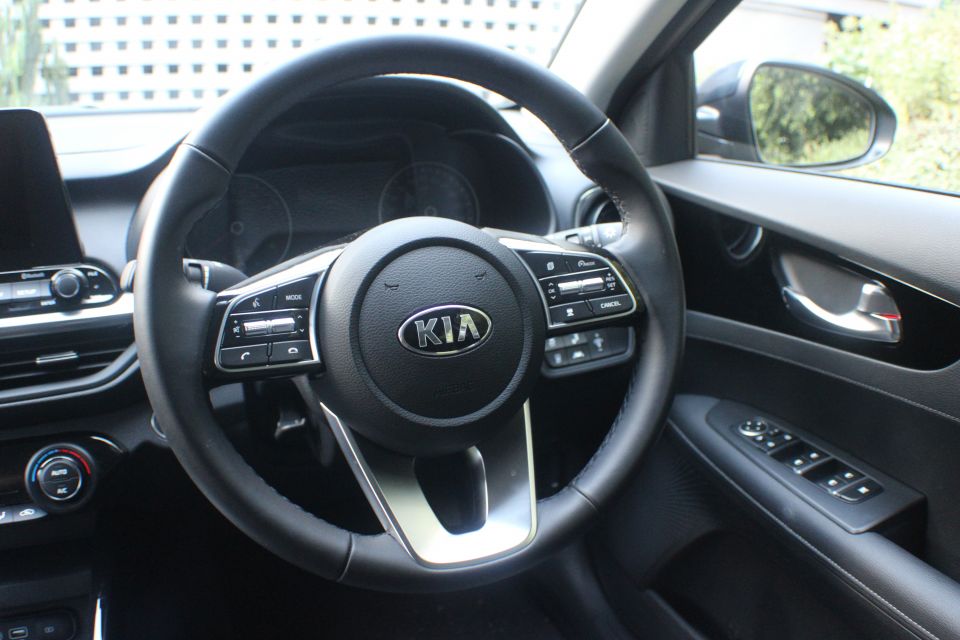

The only exception was an occasional creak heard when driving over large speed bumps.
The Cerato handles quite nicely as well, proving surprisingly enjoyable down some winding mountain roads.
It’s composed and stays flat in corners, remaining unfazed by mid-corner bumps.
What a pity, then, that this pleasantly adept dynamic package is let down by the powertrain.
There’s adequate power from the 2.0-litre four-cylinder engine but the six-speed automatic transmission struggles to make the most of the power on tap.
The naturally-aspirated engine simply doesn’t like to be revved. It’s lacking in flexibility and abundant in noise.
When driven sedately, the noise isn’t too bad. Alas, there’s not much low-end torque – peak torque is at 4000rpm – and you really have to rev it to get the most of it.
On some hillier roads, including some with a 20 per cent grade, the Cerato felt out of breath, the accelerator pedal pushed all the way to the floor.
Sport mode changes the shift patterns and makes the car feel modestly more energetic. There aren’t any paddle shifters in the Sport+ but you can use the shifter to manually change gears.
Oddly, pushing the gearshift over into the sport mode detent is the only way to get into Sport mode. The drive mode button near the shifter only allows you to toggle between the default Comfort mode and Smart and Eco modes.
The latter mode is only for exceptionally patient drivers. It dulls the throttle to make the Cerato a little more parsimonious.
Speaking of fuel economy, it’s rather disappointing.
Over the course of a few days of urban driving, it was averaging an astonishing 14L/100km.
That was presumably due to a combination of a heavy right foot and the tester being a new car with only 4000km on the odometer.
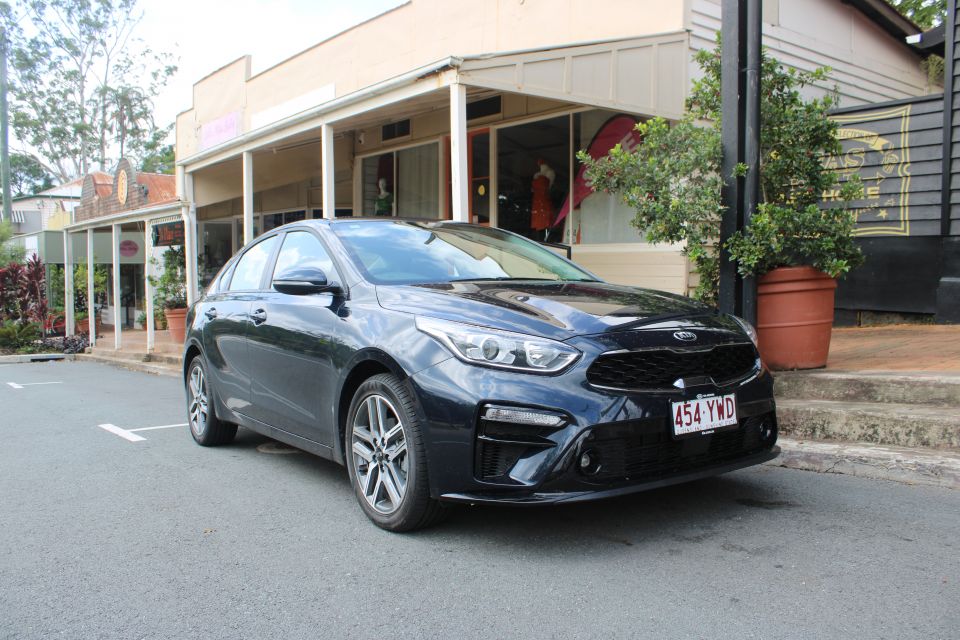

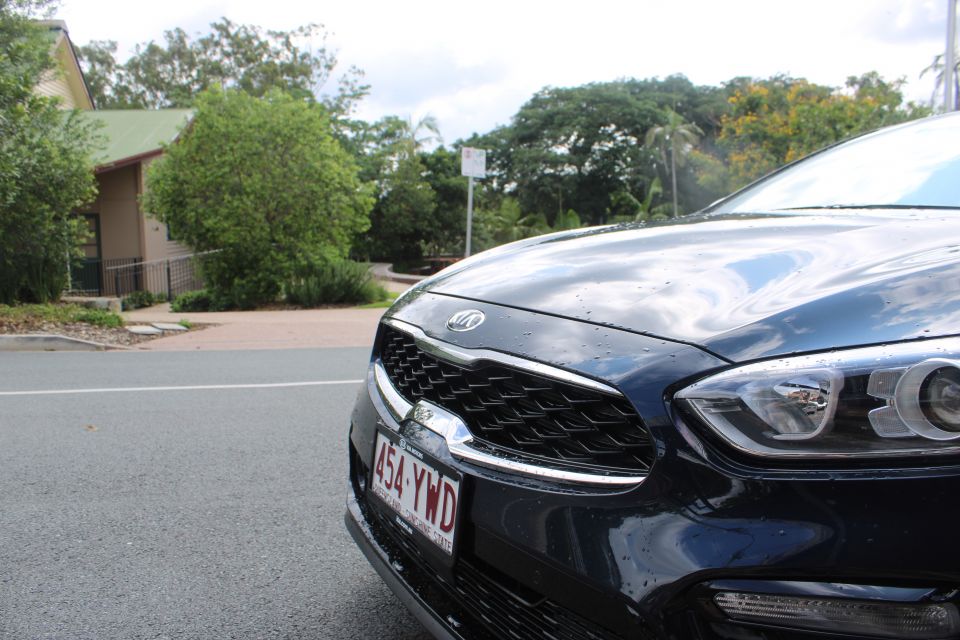
After a few days of highway and rural driving, fuel economy improved markedly. Nevertheless, it ended up averaging 9.1L/100km on 91RON petrol.
That’s nothing exceptional and it’s well off the Cerato’s expected fuel economy – 7.4L/100km on the combined cycle, with 5.7L/100km and 10.2L/100km for highway and city driving, respectively.
Despite its extra 38kW and 73Nm, the turbocharged Cerato GT manages to be more fuel-efficient.
It sips marginally less on the combined cycle at 6.8L/100km and its urban fuel economy is considerably better, with an estimated 8.9L/100km. It runs on 91RON petrol, too.
It’s yet another example of Kia making a desirable powertrain exclusive to a highly-specified flagship model. The Picanto and Rio suffer from this, too.
Rivals like the Volkswagen Golf have more flexible turbocharged engines available across their ranges but Kia persists with a naturally-aspirated engine that underwhelms, even though its power and torque outputs are class-competitive.
At least it runs on regular.
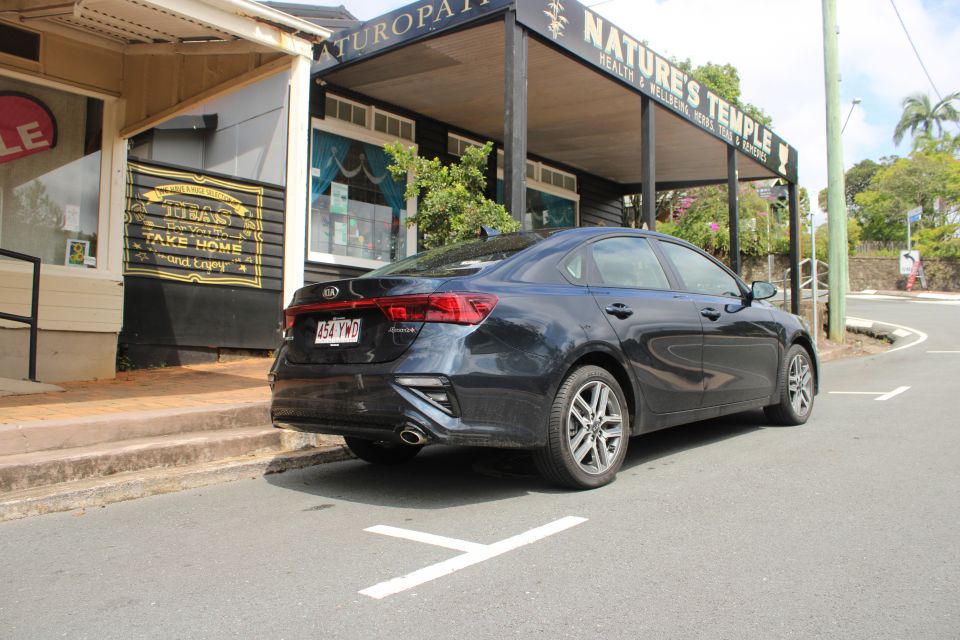

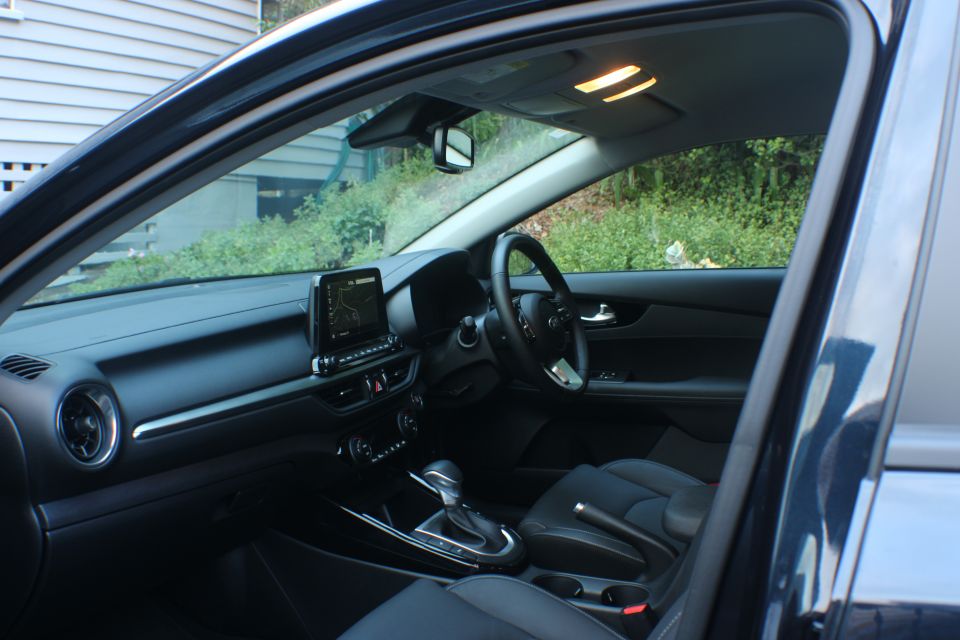
Along with the seven-year, unlimited-kilometre warranty, Kia offers seven years of capped price servicing across the Cerato range.
Total servicing cost over seven years is $2939, or an average of $419 per service. Intervals are one year or 15,000km.
Buy your new car without the stress. It's fast, simple and completely free.

Great service from Travis and team, second time I have used this business would not hesitate to recommend them to anyone
Craig C.
Purchased a Ford Ranger in Sunshine Coast, QLD
CarExpert helped Craig save $7,224 on his Ford Ranger, now let us save you on your next new car.
Get your BEST priceThough the Sport+ is almost $5000 cheaper than the GT, it’s arguably still at the diminishing end of the Cerato’s value equation.
If you can forego niceties like heated leather seats, dual-zone climate control and proximity entry, the S with Safety Pack is a tantalising $24,790 before on-road costs when equipped with the automatic.
That’s around $4000 less than the Sport+. Recent drive-away pricing has been cheaper still.
As the name suggests, the S with Safety Pack still includes the full suite of safety equipment as well as adaptive cruise control.
It even retains the leather-wrapped steering wheel and shifter.
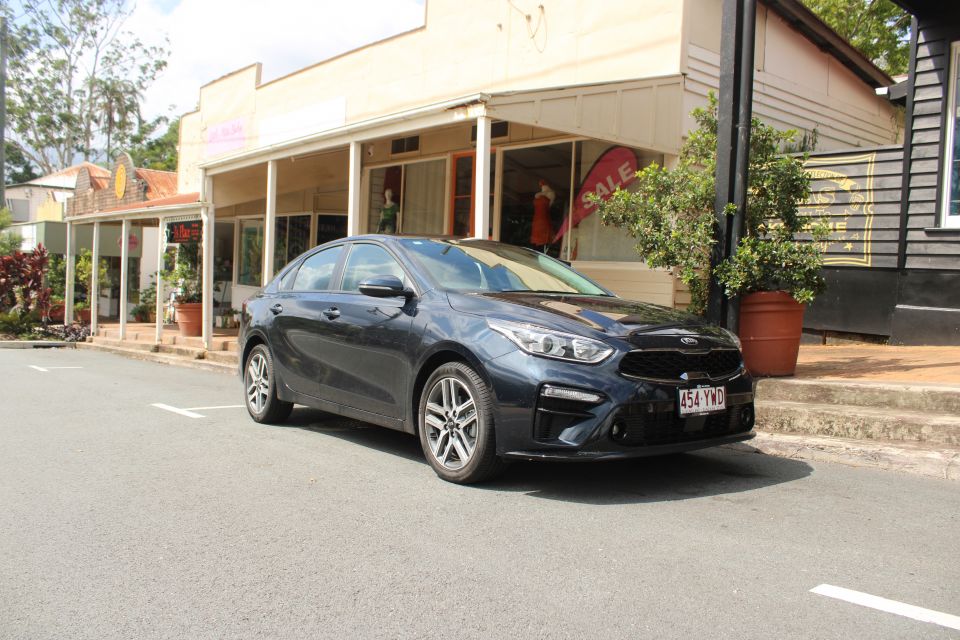
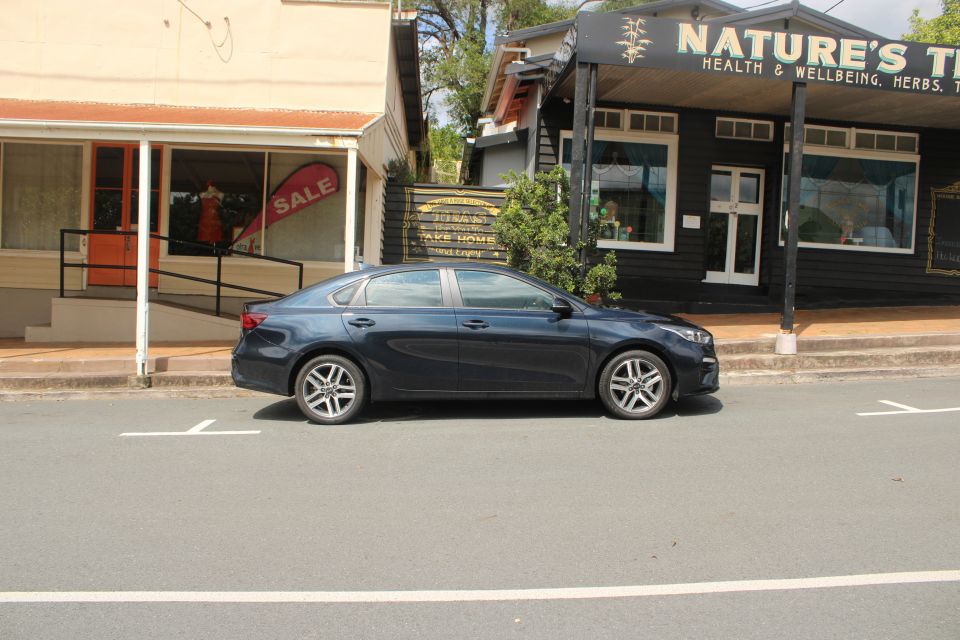
Even a sometimes uncouth engine isn’t enough to push the Cerato off the recommendation list.
It’s a handsome and well-packaged small car with a long warranty and a generous equipment list. Regular drive-away deals also help sweeten the pot.
Though its powertrain is uninspiring, the Cerato is a surprisingly good steer.
The small car segment may be ripe with compelling options but the Cerato deserves a spot on your shortlist.
Where expert car reviews meet expert car buying – CarExpert gives you trusted advice, personalised service and real savings on your next new car.
William Stopford is an automotive journalist based in Brisbane, Australia. William is a Business/Journalism graduate from the Queensland University of Technology who loves to travel, briefly lived in the US, and has a particular interest in the American car industry.


Max Davies
5 Days Ago


Max Davies
4 Days Ago


Neil Briscoe
3 Days Ago


Max Davies
2 Days Ago
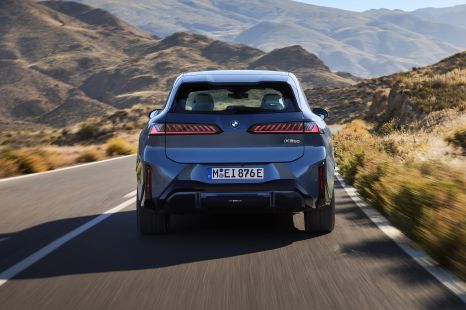

Alborz Fallah
22 Hours Ago


Damion Smy
21 Hours Ago